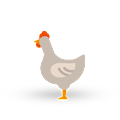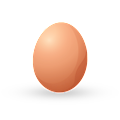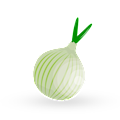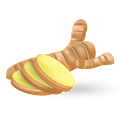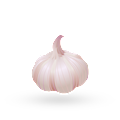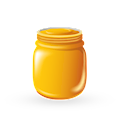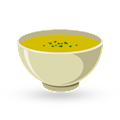Best Eritrean Foods
MAIN INGREDIENTS
Doro wat (known as tsebhi derho in Eritrea) is a festive type of wat stew made with chicken, usually bought from outdoor markets. The meat gets soaked in water, salt, and lemon juice to eliminate bacteria, and it's then cut into eight to twelve pieces.
Peeled hard-boiled eggs are added to the stew about five minutes before it is done in order to absorb all the savory spices and the delicate red color. With tender meat, spicy eggs, and a rich, flavorful sauce, doro wat is a must-have at every festivity, Christmas and Easter included.
OTHER VARIATIONS OF Wat
MAIN INGREDIENTS
Injera (or tayta) is a spongy Ethiopian and Eritrean flatbread and an integral part of life for the locals. The bread is made from teff, the tiniest grain in the world, also considered a super grain due to its high nutritious properties. Injera is so popular that the people greet each other by asking "Did you eat injera today?", and if the answer is positive, that assures the other person that all is well.
This flatbread is served for breakfast, lunch, and dinner, and sharing it when times are rough has kept many Ethiopians and Eritreans alive. Its flavor is tart and quite similar to sourdough bread. The dough is left for three days to ferment and is then shaped into a large, pancake-like disk.
MAIN INGREDIENTS
Kitcha is an unleavened Ethiopian flatbread made with wheat flour, water, and salt. The dough is traditionally baked in a pan on both sides until it develops a golden-brown color of the exterior. The flatbread can be additionally spiced with chili and cardamom.
It is usually served warm with melted butter, or used in a dish called fit-fit.
MAIN INGREDIENTS
Fata is often described as the Eritrean version of panzanella, but in this case, the dish is not tossed with tomatoes but with a rich and spicy tomato stew which is soaked up by crusty bread. This spicy tomato and bread salad typically consists of minced onions, garlic, diced tomatoes, oil, tomato paste, cayenne pepper, allspice, and pieces of crusty bread.
The whole salad is usually dressed with full-fat yogurt, providing refreshment and contrast to the bold flavors of other ingredients.
MAIN INGREDIENTS
Shahan ful is a traditional dish from the countries of the Horn of Africa that is typically served for breakfast. The dish is made by slowly cooking fava beans in water until they soften, then mashing them into a purée. The purée is then combined with onions, lemon juice, berbere spices, chili peppers, and tomatoes.
When served, shahan ful is sometimes garnished with yogurt on top and accompanied by bread rolls on the side. The dish is especially popular during Lent and Ramadan.
MAIN INGREDIENTS
Genfo or ga'at is a simple Ethiopian and Eritrean porridge that is commonly consumed for breakfast, made by adding dry-roasted barley flour or wheat flour to boiling water and stirring the concoction with a wooden utensil until it develops a smooth, yet extremely thick consistency.
The porridge is then transferred to a bowl, shaped into a mound, and a hole is created in the center, usually by using a finjal (Ethiopian coffee cup). The well is filled with clarified spiced butter niter kibbeh (it will usually be made with spices like besobela known as Ethiopian sacred basil, koseret, fenugreek, cumin, coriander, turmeric, Ethiopian cardamom, cinnamon, or nutmeg ) and berbere, a mix of chili peppers and up to 20 different spices.
MAIN INGREDIENTS
Hamli is a traditional African dish originating from Eritrea. It consists of sautéed collard greens. They are first steamed until tender, then sautéed with a mix of garlic, cilantro, oil, onions, ginger, parsley, and tomatoes. The dish is sautéed until the collard greens are fully tender and full of flavor.
Once prepared, hamli is usually accompanied by injera bread on the side.
MAIN INGREDIENTS
Injera fit-fit is a fit-fit variety that is, in its basic version, prepared with a combination of berbere spices, clarified butter, onions, and torn pieces of injera flatbread. Chunks of meat or leftover meat sauces are often added to the dish, which is sometimes served for breakfast with yogurt and chili peppers on the side.
When served in a bowl, injera fit-fit is consumed with a spoon, but when it’s served on top of another piece of injera flatbread, it is customarily consumed with the right hand.
OTHER VARIATIONS OF Fit-fit
MAIN INGREDIENTS
Himbasha or ambasha is a traditional and Ethiopian flatbread consisting of flour, water, yeast, sugar, sesame seeds, ground cardamom, and raisins (only in Eritrean version) resulting in a unique combination of sweet and savory flavors. It is characterized by a decorative wheel pattern that is scored on its top.
In Eritrea and Ethiopia, himbasha is traditionally consumed for breakfast after mass, but it is also a popular item at numerous festivities and celebrations. Interestingly, breaking this bread over the back of a child on his first birthday to give him strength is a local tradition.
Simple and flavorful kulwa is a popular Eritrean dish consisting of lamb or beef chunks fried with berbere spices, butter or ghee, tomatoes, and onions. The dish is traditionally served with rice or injera flatbread on the side, used for mopping up the delicious sauce.
It is recommended to pair it with tej, a traditional honey wine.
TasteAtlas food rankings are based on the ratings of the TasteAtlas audience, with a series of mechanisms that recognize real users and that ignore bot, nationalist or local patriotic ratings, and give additional value to the ratings of users that the system recognizes as knowledgeable. TasteAtlas Rankings should not be seen as the final global conclusion about food. Their purpose is to promote excellent local foods, instill pride in traditional dishes, and arouse curiosity about dishes you haven’t tried.



